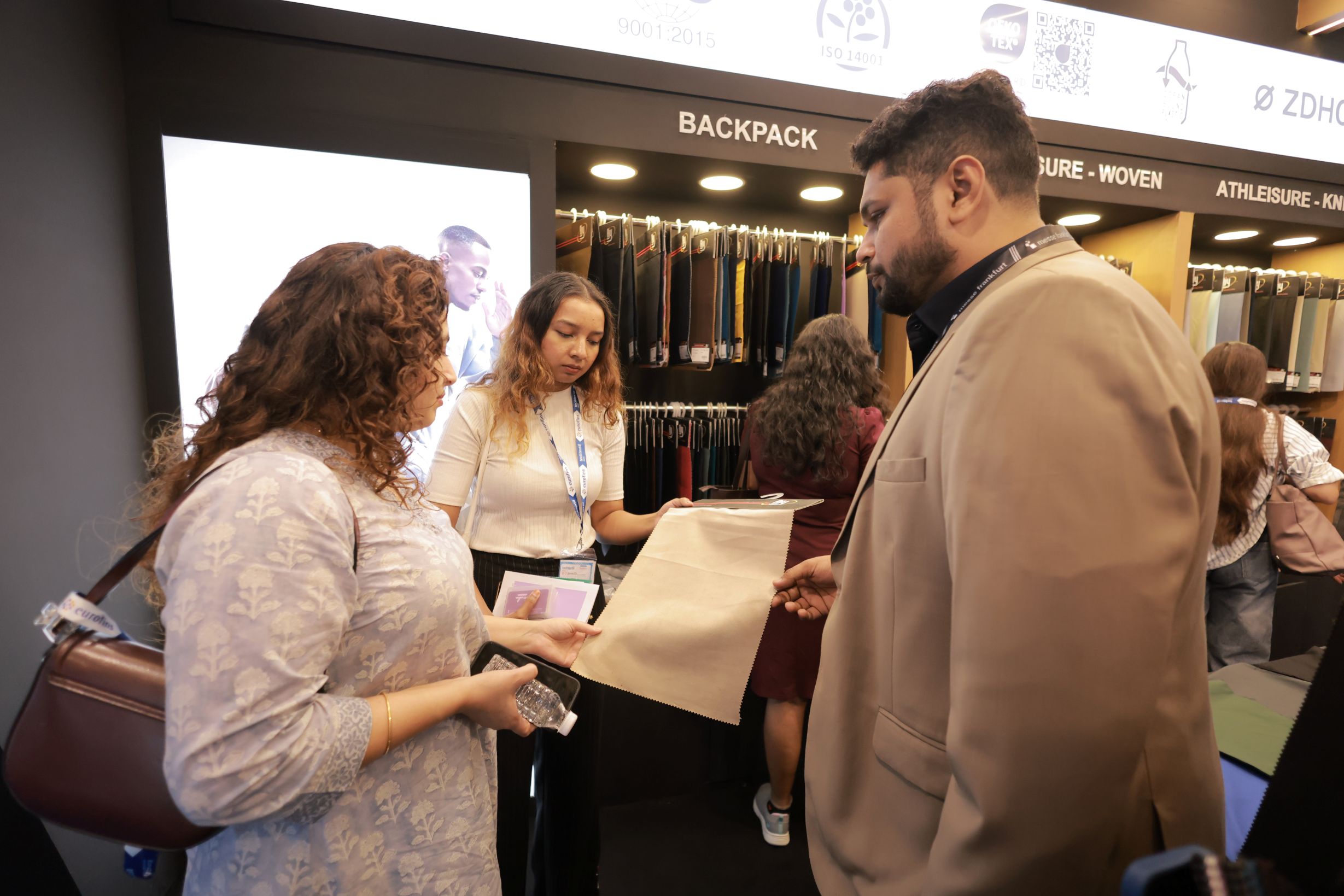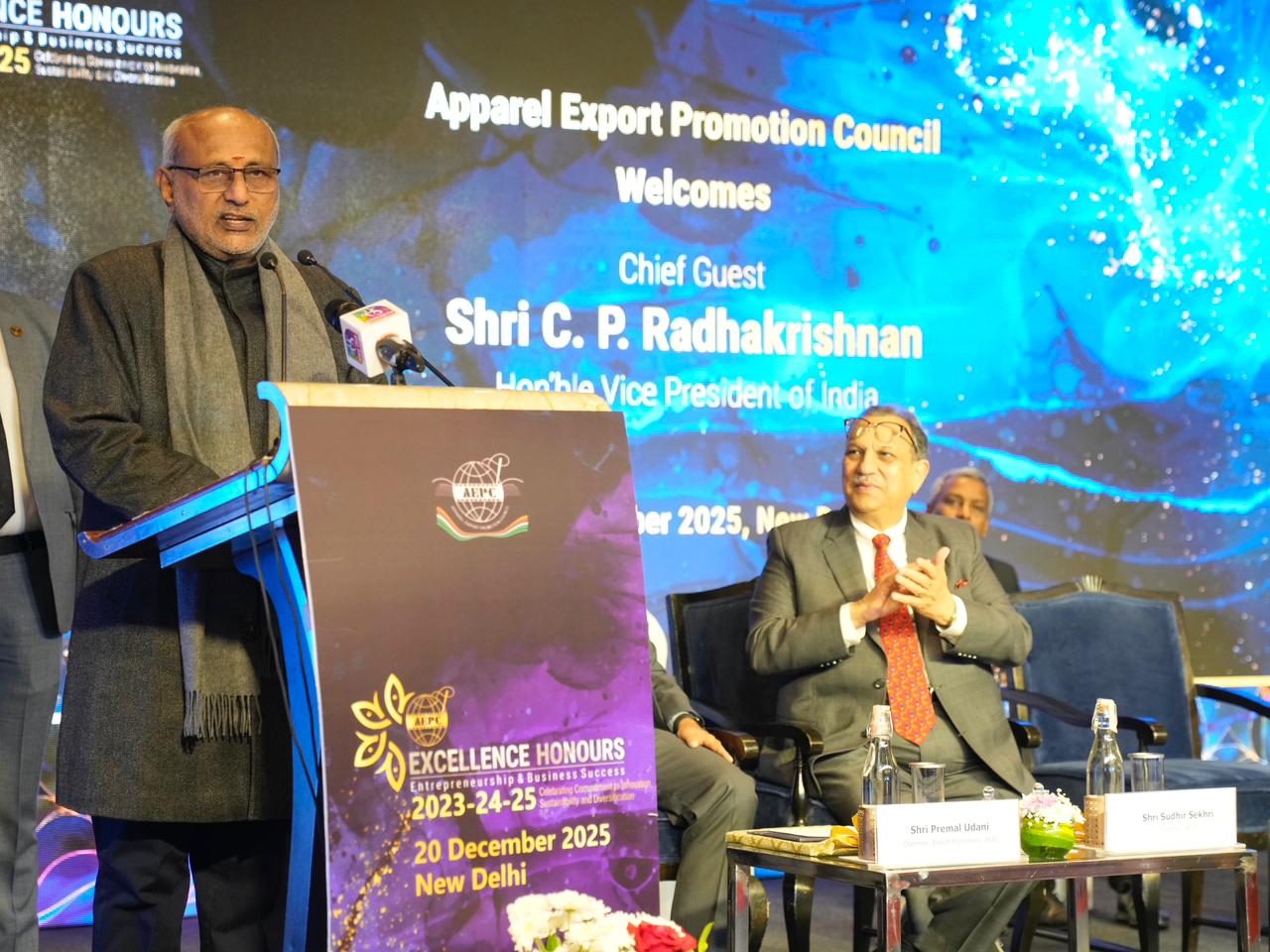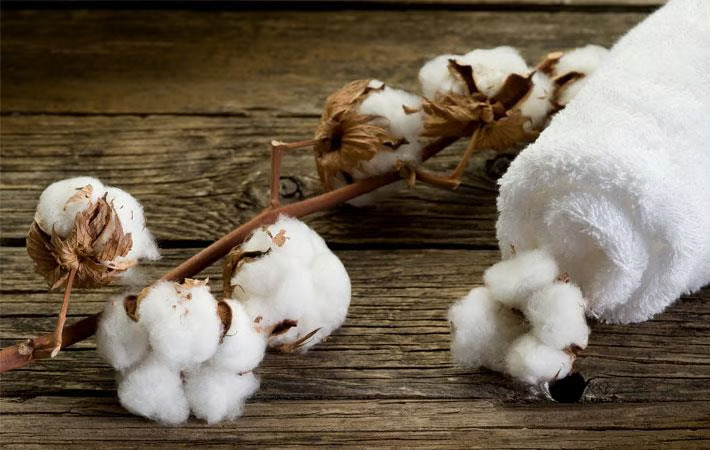FW

When Washington set out to ‘reclaim manufacturing’ through punitive tariffs, it was envisioned as a patriotic reset one that would bring back the hum of American sewing machines and the pride of Made in USA labels. But the reality unfolding across global apparel boardrooms tells a very different story. The US administration’s tariff regime especially on imports from major suppliers like China, India, and Brazil has done little to trigger domestic production. Instead, it has ignited a global supply chain exodus, with American brands quietly redrawing their sourcing maps toward tariff-resilient countries.
In effect, tariffs have become a ‘fixed cost of doing business’, not a tool for reshoring. And the only sustainable corporate response has been diversification, innovation, and scientific compliance not domestic revival.
The diversification imperative: Flexibility as the new efficiency
The modern sourcing map for US-facing apparel brands resembles a patchwork quilt no longer dominated by China, but distributed across a constellation of smaller, nimble suppliers in Vietnam, Jordan, India, and Eastern Europe. For sourcing executives, diversification is no longer optional; it’s a risk strategy. Facing tariffs as high as 50 per cent on India and Brazil, and higher rates on China, companies are building multi-country manufacturing footprints to avoid single-point failures. “You don’t beat tariffs by making everything in America you beat them by never depending on one country again,” says a sourcing head at a leading US activewear brand.
Table: Shifts in US apparel import share (2020–2025)
|
Country |
Import share (%) 2020 |
Import share (%)2025 |
Change (bps) |
Comment |
|
China |
36.8 |
22.5 |
-1,430 |
Sharp decline due to cumulative tariffs |
|
Vietnam |
13.4 |
18.9 |
+550 |
Key beneficiary of relocation |
|
India |
6.7 |
9.8 |
+310 |
Gains from preferential sourcing deals |
|
Jordan |
2.9 |
5.2 |
+230 |
Expanding under QIZ and FTA frameworks |
|
USA (domestic) |
2.1 |
2.4 |
+30 |
Negligible movement despite policy intent |
The data illustrates that while Asia remains dominant, the geography within Asia is shifting. Vietnam and India have capitalized on the tariff turbulence, while domestic US manufacturing has failed to capture any meaningful uplift.
Treating tariffs as a permanent variable
Rather than lobbying for exemptions, most firms are institutionalizing tariff costs. Internal documents from several US importers describe these duties as fixed variables, which is costs to be managed, not avoided. This has given rise to supplier-partnering models, where brands and vendors share the burden across logistics, packaging, and material margins. For example, bulk order consolidation to reduce freight costs or lightweight packaging to minimize shipping weight and early-payment incentives to offset cash flow constraints. The focus is now on absorbing, not escaping, tariffs with operational efficiency serving as the real currency of resilience.
The Made in USA mirage
Despite the policy rhetoric, the hard truth is that us apparel production continues to shrink. tariffs on imported inputs fibers, yarns, and trims have created a tariff-on-tariff trap. “Even if you cut and sew in the us, your yarns, dyes, and zippers still cross borders and still attract tariffs,” notes a textile economist at the American Apparel & Footwear Association.
Table: US textile and apparel manufacturing output index (base year: 2015 = 100)
|
Year |
Output Index |
YoY Change (%) |
|
2018 |
94 |
-1.2 |
|
2020 |
90 |
-4.3 |
|
2022 |
86 |
-4.4 |
|
2025 |
83 |
−3.5 (est.) |
Even after years of tariffs intended to protect domestic industry, production continues to decline, suggesting that import barriers alone cannot rebuild an industrial base that depends on global raw material inputs.
The innovation shield, science, sustainability, and circular design
As trade unpredictability grows, innovation is emerging as the ultimate tariff shield. Forward-looking firms are now investing in materials and models that make their supply chains both circular and classification-proof.
Tariff-resilient materials: Firms are developing modular, decentralized materials that can be produced closer to end markets. This includes sustainable hemp blends, bio-based fibers, and lab-grown alternatives that qualify for lower tariff classifications under the Harmonized Tariff Schedule (HTSUS).
Circular value chains: Companies are shifting toward textile-to-textile recycling starting production with waste rather than virgin fiber. This not only cuts raw material dependency but also isolates the value chain from tariff volatility.
Compliance through science: The intersection of trade regulation and ethics is pushing brands toward scientific verification tools like stable isotope and DNA traceability to prove raw material origin. This converts compliance from a bureaucratic headache into a strategic advantage, reducing detention risks and misclassification penalties.
Table: Innovation pathways in US apparel sourcing (2023–25)
|
Strategy |
Adoption Rate (%) |
Primary Impact |
|
Sustainable / Hemp Blends |
42 |
Tariff rate reduction & HTS reclassification |
|
Textile Recycling Integration |
35 |
Raw material insulation |
|
Stable Isotope Verification |
18 |
Compliance proof, reduced detention risk |
|
Onshore Digital Sampling |
27 |
Faster, low-volume prototyping near H |
The data underscores a clear shift from tariff avoidance through geography to tariff resilience through innovation. Science and sustainability are now supply chain instruments, not marketing slogans.
The 2025 sourcing scenario highlights: tariffs have succeeded in changing trade routes, not in reshoring production. The result is a more fragmented but agile global ecosystem where sourcing decisions are driven less by patriotism and more by precision. American brands are building flexible, tariff-resilient networks that stretch from Vietnam’s industrial parks to India’s cotton hubs, from Jordan’s QIZ zones to Romania’s nearshoring corridors. In short, the world has adapted faster than the policy. The Made in USA ideal remains powerful in rhetoric but in practice, it’s Made for the USA that now defines the global supply chain of 2025.
Philippines’ textile and apparel (T&A) exports are projected to grow by 2 per cent-5 per cent in 2026, building on an expected revenue increase this year. According to the Foreign Buyers Association of the Philippines (FOBAP), this optimism is fueled by government efforts to reduce US tariffs and industry expansion into new markets.
Robert Young, President, FOBAP, who is also a trustee for the textile sector of the Philippine Exporters Confederation Inc. (Philexport), stated, revenues from apparel and garment exports in 2025 are expected to rise to $1 billion, from approximately $900 million last year. Young noted, advance deliveries helped mitigate the impact of the current US tariff.
A key factor driving the positive outlook is the government’s push to secure exemptions from the current US tariff, which stands at 19 per cent for most Philippine goods entering the country. Frederick Go, Finance Secretary recently indicated the government’s hope to eliminate this tariff for garment, travel accessories, and furniture exports, following the precedent set by key semiconductor and agricultural goods that are already exempt.
Young stressed the industry's need for stronger market access through trade agreements. He pointed out, the Philippines lags behind its neighbors, having the ‘least number of FTAs among the ASEAN countries,’ and urged the government to pursue more Free Trade Agreements with regions like the European Union, Canada, and Australia to support continued export growth.
Furthermore, to boost competitiveness, industry players are requesting government subsidies to offset high operating costs, particularly for power and labor. Young mentioned ongoing discussions with the Department of Labor and Employment (DOLE) to potentially secure tax deductions or other concessions tied to export performance. The successful reduction of the US tariff and expansion of the FTA network are seen as critical factors determining the industry’s success in 2026.
A vital segment for low-count yarn production, the open-end spinning mills in Coimbatore have been forced to cut operations drastically, now running for as little as two to three days per week as of December.
This severe scaling back is a direct result of an ‘irrational’ price hike in waste cotton - the primary recycled fiber feedstock for these mills. Spinning mills selling the waste have hiked prices for materials like Comber Noil by Rs 4-Rs 8 per kg over the last two months. This is a paradoxical situation since the price of new raw cotton has declined significantly. This artificial inflation has rendered the recycling process financially unviable.
The OE sector specializes in converting this waste (eg., Comber Noil rising from Rs 100 to Rs 108 per kg into 2-count to 30-count yarn, which supplies handlooms and power looms for staple products like 'kada' (sheeting) fabrics. Industry leaders, including the Recycle Textile Federation, confirm, mills cannot raise their output yarn prices to match the input cost hike due to weak market orders and high existing stocks. Mill operators fear that a reduction in prices for 20-count yarn could trigger a collapse in the North Indian 'kada' trading market. This crisis threatens the OE segment, which relies on a historical business model of cost-effective, recycled inputs to underpin the low-cost apparel and textile manufacturing chain. The Federation has now instructed members to procure materials only based on last month’s prices, signaling a market standoff to prevent further losses.
The prospect of the India-European Union Free Trade Agreement (FTA) nearing completion is indeed being called a ‘game-changer’ by industry bodies like CTA Apparels.
The most significant benefit of the FTA is the expected elimination of the import duties currently imposed by the EU on Indian textile and apparel goods. Indian apparel exports to the EU currently face a standard EU tariff that averages around 9.6 per cent. However, once the FTA is implemented, these tariffs would be scrapped or phased out. This immediately makes Indian products 9.6 per cent more competitive on price compared to rivals who do not have an FTA with the EU.
The tariff elimination directly addresses the competitive disadvantage India faces compared to its top rivals like Vietnam and Bangladesh in the EU market.
These major competitors already benefit from preferential access. Bangladesh, as a Least Developed Country (LDC), enjoys zero-duty access under the EU's Everything But Arms (EBA) scheme. Vietnam also has a functioning FTA with the EU.
The FTA will put India on a similar footing with Vietnam and significantly reduce the price gap with Bangladesh, allowing India to increase its market share.
The EU is already India's second-largest export destination for textiles and apparel. The removal of duties is projected to lead to substantial growth. Industry experts project that the FTA could lead to 20 per cent to 30 per cent growth in apparel exports to the EU within the first two years of implementation.
The FTA is also essential for India’s market share in EU’s T&A imports which currently stands at 5 per cent.
The increased demand and market assurance provided by the FTA will likely attract major investment in the Indian textile and apparel sector, particularly in the Man-Made Fibre (MMF) segment and Technical Textiles, which are high-value areas.
India's geographical proximity compared to some Far East competitors, combined with stable supply chains, will appeal to EU buyers seeking faster delivery and a 'China plus one' sourcing strategy.
The European Union (EU) is dramatically accelerating its efforts to counter the flood of low-priced Chinese goods entering the market, primarily targeting e-commerce giants like Shein and Temu. Effective July 1, 2026, a flat-rate tax of €3 will be applied to small non-EU parcels, marking the end of the long-standing customs duty exemption for consignments valued under €150.
This move is strategically aimed at addressing the massive volume of imports, 91 per cent of which - totaling over 4 billion consignments in 2024 - originated from China. Roland Lescure, Economy Minister, France emphasized the urgency, noting the unfair competitive advantage these duty-free parcels have over European retailers who pay full taxes.
The tax measure had been planned as part of the Customs Union reform but was not set to apply until 2028. However, amid intense pressure led by France, the 27 member states agreed in November to implement the duty change ‘as soon as possible’ in 2026.
The challenge now is establishing a ‘simple and temporary’ taxation method until the new customs data platform is operational. Lescure advocated for a flat-rate tax over proportional taxation, arguing that a fixed fee would be a more effective deterrent against the high volume of low-value shipments. European diplomats, however, noted the difficulty of implementing such a provisional system quickly using current resources.
Beyond the €3 tax, the EU’s offensive includes the introduction of handling fees starting November 2026, proposed at €2 per parcel. This fee will help finance the development of enhanced customs controls, aiming to ensure imported goods comply with EU standards and to intercept dangerous or counterfeit products. Together, the new tax and fee are designed to level the playing field for European businesses against the rising tide of ‘made in China’ competition.
The Better Cotton Initiative (BCI) is launching a new biochar pilot project in India in collaboration with climate-tech startup Planboo. The project aims to boost soil health, make farms tougher, and create new ways for cotton growers to earn income from carbon credits.
According to BCI officials, the pilot will test out scalable, farm-level production of biochar using agricultural waste. Often compared to a charcoal-like soil additive, Biochar is becoming a key tool for regenerative cotton farming because it improves soil structure, holds onto nutrients better, and increases water-holding capacity.
Highlighting biochar's major role in long-term carbon removal, climate experts suggest it contributes to about 92per cent of global carbon removals and could potentially store an estimated 6 per cent of annual greenhouse gas emissions in the long term. BCI expects these climate advantages to open up new carbon monetization paths for India's smallholder cotton farmers.
For the pilot, farmers will be trained on how to produce biochar, handle it safely, and apply it to the soil. Planboo’s digital monitoring system will help collect data on soil carbon levels, crop performance, and overall environmental results. BCI plans to evaluate these results to scale the model across other cotton-growing regions.
Bangladesh’s cotton industry is expected to watch the outcomes closely. Biochar applications could provide long-term benefits for restoring soil and improving farm sustainability in water-stressed areas. Industry analysts believe these kinds of regenerative approaches will support Bangladesh’s focus on circularity and climate-resilient agriculture goals.
Bangladesh’s RMG exports to non-traditional markets declined by 3.39 per cent Y-o-Y during July–November of the FY25–26. This downturn in alternative destinations - markets outside the EU, US, Canada, and the UK- signals mounting challenges in diversification strategy, market positioning, and policy support. Non-traditional markets account for approximately 16 per cent of the country's total apparel exports.
Data from the Export Promotion Bureau (EPB) highlights sharp contractions in several key non-traditional destinations. Exports to Australia, Bangladesh’s largest alternative market, contracted 10 per cent Y-o-Y to $313 million. Shipments to India dropped by over 8 per cent to $298 million. Other major declines included South Korea (-12 per cent), Mexico (-16 per cent), Turkey (-25 per cent), and Russia (-23 per cent).
Industry leaders attribute this contraction to several factors: sluggish global consumer demand, weak institutional marketing, limited product diversification for specific markets, and a significant reduction in government export incentives. Shehab Udduza Chowdhury, Vice-President, BGMEA, notes, poor marketing, lack of continuous follow-up, and the decrease in cash incentives hurt performance. The government previously offered a 5 per cent cash incentive for new market shipments, which has now been cut to 2 per cent, significantly discouraging exporters amid rising operational costs.
In contrast, traditional markets showed relative resilience. Garment exports to the United States rose by 3 per cent to $3.22 billion, and shipments to Canada and the United Kingdom grew by 6.51 per cent and 3 per cent respectively. The European Union remained the largest regional market, though results were mixed, with growth in Spain and Poland offset by declines in Germany, France, and Italy.
Despite the overall slowdown in non-traditional exports, niche markets like China, Japan, Brazil, and South Africa showed growth, suggesting that targeted strategies can still be effective. Trade analysts emphasize the urgent need for renewed policy incentives, market-specific product development, and stronger commercial diplomacy abroad to prevent Bangladesh from losing further ground in competitive global sourcing.
Global apparel manufacturing giant Hirdaramani Group has reinforced its leadership position in sustainability by launching the Mihila Concept Store, which directly translates its low-impact factory practices into a consumer retail experience. This strategic pivot into direct-to-consumer sustainability education comes shortly after the company became the first in Sri Lanka to receive Net-Zero Science Based Targets initiative (SBTi) approval in 2024. This approval mandates a concrete plan to reduce absolute Scope 1 and 2 greenhouse gas (GHG) emissions by a massive 54.6 per cent by 2033. The physical store allows consumers to directly engage with the outputs of its sustainable manufacturing base, which already sources a substantial 75 per cent of its energy from renewable sources - a rate significantly higher than the industry average.
Mitigating carbon tariffs with green credentials
This retail initiative is crucial as the group, which operates across South Asia, Africa, and recently expanded to Egypt in 2025 (a market seeing a 22 per cent surge in garment exports), prepares for the challenges outlined in its upcoming Future First 2.0 Roadmap (2026–2030). Chief among these challenges is mitigating the growing risks of carbon tariffs from major buying markets like the EU. By showcasing its Mihila Tex facility (a case study in minimal-impact, waste-reducing manufacturing) and achieving verifiable certifications like the SBTi, Hirdaramani is securing its global market access and accelerating its shift towards circular textile practices, positioning green credentials as a competitive advantage. Dr. Leonie Vaas, General Manager Group Sustainability, remarks, the concept store makes the measurable reality of reduced impact tangible for the ethical consumer.
A century-old global apparel manufacturer providing end-to-end solutions, from design to delivery, the Hirdaramani Group operates a global footprint spanning Sri Lanka, Bangladesh, Vietnam, Ethiopia, and Egypt. It specializes in apparel (knitted and woven garments), fabric (dyeing and finishing), and e-commerce. Hirdaramani is internationally recognized for its deep commitment to sustainability, holding over 11 LEED certifications for its green factories. Its core focus is the ‘Continuous Progression, Together’ purpose, centered on reducing environmental impact (targeting a 54.6 per cent reduction in Scope 1 and 2 GHG emissions by 2033) and enhancing social well-being across its multi-country operations.
The PM Mega Integrated Textile Region and Apparel (PM MITRA) Park in Dhar, Madhya Pradesh, is rapidly transitioning from concept to a global production powerhouse, confirmed by investment proposals exceeding Rs 20,000 crore from over a hundred leading textile firms.
The park’s unique advantage is its strong backward linkage to agriculture, as Madhya Pradesh is the largest contributor to India’s organic cotton production, accounting for 43 per cent of the national output. This organic supply provides a critical, sustainable raw material edge, which is currently in high global demand.
Inditex partnership: A green value chain
Owner of brands like Zara, the Inditex Group has actively engaged with the state, exploring a partnership to anchor a sustainable, ESG-certified value chain within the Dhar park. This potential collaboration aligns perfectly with Inditex’s commitment to source 100 per cent of its raw materials from sustainable sources by 2030 and its existing efforts on regenerative agriculture in the region.
The state is accelerating this interest through policy incentives, including a massive 90 per cent subsidy on land and 40 per cent capital assistance for machinery, designed to attract global supply chain leaders. The overall project is expected to generate 3 lakh employment opportunities, transforming Madhya Pradesh's annual textile exports, currently over Rs 7,000 crore, toward a new high.
Inditex (Industria de Diseño Textil S.A.) is one of the world's largest fashion retail groups, operating eight major brands globally, including Zara, Massimo Dutti, and Bershka. It is renowned for its fast-fashion business model, which relies on a highly integrated and responsive supply chain. Inditex is a leader in setting ambitious sustainability targets, aiming for net zero emissions by 2040 and focusing on circularity, water management, and the use of preferred fibers, including organic and regenerative cotton.
Shifting away from a single, centralized ‘international market hub,’ the Textile Ministry is prioritizing a comprehensive 40-country market diversification strategy.
This decision is rooted in the belief that a decentralized, targeted approach across high-potential global destinations will be more effective in accelerating the country’s textile and apparel exports, which currently stand at approximately $40 billion, toward the ambitious target of $100 billion by 2030.
The finalization of 15 Free Trade Agreements (FTAs), including the recent India-UK CETA, aims to drastically reduce tariff barriers and simplify procedures, making Indian exports immediately more competitive. This new approach complements the ongoing development of the seven PM MITRA Parks, which are creating world-class, integrated production ecosystems from spinning to garmenting, providing a modern, plug-and-play base for manufacturers. Confirming this focus, Pabitra Margherita, Minister of State for Textiles, highlighted, schemes like RoSCTL and RoDTEP continue to provide vital rebates on embedded taxes, benefiting over 15,000 exporters in FY 2024–25.
The new roadmap is a direct response to the urgent need to close the cost and productivity gap with regional rivals like Bangladesh and Vietnam. By signing FTAs and adopting a diversified market strategy, India seeks to attract major global brands currently looking to diversify their supply chains.
A flagship initiative of the Government of India, the PM Mega Integrated Textile Regions and Apparel (PM MITRA) Parks Scheme was approved with an outlay of Rs 4,445 crore. It aims to establish seven world-class integrated textile parks across the country to create a 'Farm to Foreign' value chain, offering a reduction in logistics costs and improved competitiveness. The parks will provide plug-and-play infrastructure and common facilities, focusing on Man-Made Fibers (MMF), technical textiles, and boosting employment in the sector.











